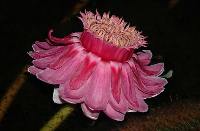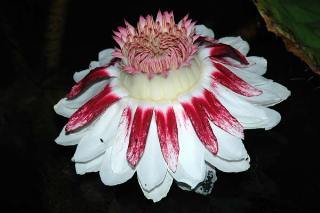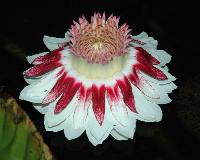A Rare and Unusual Victoria amazonica,
White the Second Night
 |
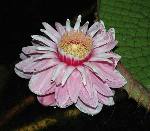 |
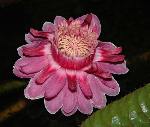 |
 |
|
^ Victoria 'Adventure', V. cruziana, V. amazonica photographed the same nights the white V. amazonica opened. ^ The white V. amazonica, foreground, V. 'Adventure', background. > |
|||
|
V. amazonica plants are typically slow growers relative to V. cruziana and the hybrids. Many attain their largest size and begin blooming in September and October. This plant had its first flowers in September but we didn't see them the second night. This was because three flowers were bred the morning between the first and second nights, closed and covered. Two others reached above the surface and never opened. Was this an odd flower? Would subsequent flowers continue to be white? They were, flower after flower. That raises the question of genetic aberration. It certainly is an interesting idea but is this good or is it bad? Though the plant is large and seems strong, might these white flowers be weaker? The two that didn't open, in very good weather, were certainly atypical of V. amazonica. |
||

|
 |
|
| Will seeds resulting from self-pollinating these white flowers produce plants with white second night flowers? It will be interesting to see! It will take many people growing the strain to test it. The Victoria Seed Bank is open for requests. If you are interested in growing it, specify "The White One". | ||
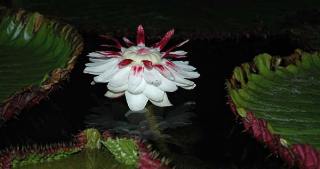 |
||
